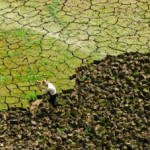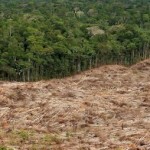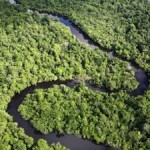
Hyderabad, India – The world’s governments have agreed to increase funding in support of actions to halt the rate of loss of biodiversity at the eleventh meeting of the Conference of the Parties to the United Nations Convention on Biological Diversity (CBD COP 11), which ended on October 20.
Developed countries agreed to double funding to support efforts in developing states towards meeting the internationally-agreed Aichi Biodiversity Targets, and the main goals of the Strategic Plan for Biodiversity 2011-2020.
The Saragasso Sea, the Tonga archipelago and key corals sites off the coast of Brazil are among a range of marine areas to receive special attention by governments as part of renewed efforts agreed in Hyderabad to sustainably manage the world’s oceans. Many of the areas are beyond national jurisdictions and, as such, receive little or no protection at present.
Other key decisions taken at the 11th Conference of the Parties to the Convention on Biological Diversity include new measures to factor biodiversity into environmental impact assessments linked to infrastructure and other development projects in marine and coastal areas.
Braulio Ferreira de Souza Dias, Executive Secretary of the Convention on Biological Diversity, said, “”These results, coming in a period of economic crisis, demonstrate that the world is committed to implementing the CBD. We see that governments are moving forward in implementation and seeing biodiversity as an opportunity to be realized more than a problem to be solved.””
“We now need to move forward in the next two years, under the able leadership of India, the COP 11 President, to consolidate this work and to advance further. I look forward to other pledges in support of the Hyderabad Call for Biodiversity Champions that will allow us to realize our goals,” he said.
Smt. Jayanthi Natarajan, Minister of Environment and Forests for India and President of the COP, said, “”The present economic crisis should not deter us, but on the contrary encourage us to invest more towards amelioration of the natural capital for ensuring uninterrupted ecosystem services, on which all life on earth depends.””
“The UN Biodiversity Conference in Hyderabad has taken forward the renewed momentum, forged two years ago in Nagoya,” said United Nations Under-Secretary-General and UN Environment Programme Executive Director Achim Steiner. “”Countries have sent a clear signal and delivered additional commitments underlining the fact that biodiversity and ecosystems are a development priority and central to a transition to an inclusive Green Economy,” added Mr. Steiner.
“Mobilizing the necessary financial resources from the public and private sector needed to ensure achievement of the 2020 targets remains a challenge – but here in India, many nations including developing economies have signaled their determination and sense of urgency to seize the opportunities by providing much needed additional support,” said Mr. Steiner.
Agreements on Funding
Developed countries agreed at the conference to increase funding to support efforts in developing states towards meeting the Aichi Biodiversity Targets.
Using a baseline figure of the average annual national spending on biodiversity between 2006 and 2010, developed countries said they would double funding by 2015. The COP also set targets to increase the number of countries that have included biodiversity in their national development plans, and prepared national financial plans for biodiversity, by 2015.
All Parties agreed to substantially increase domestic expenditures for biodiversity protection over the same period.
These targets, and progress towards them, will be reviewed in 2014.
For the first time, developing countries at COP 11, including India and several African states, pledged additional funds above and beyond their core funding towards the work of the CBD.
Marine Biodiversity
The 193 Parties to the CBD agreed to classify a diverse list of marine areas, some renowned for containing ‘hidden treasures’ of the plant and animal world, as ecologically or biologically significant.
Earlier this week, UNEP launched its Protected Planet 2012 report which found that half of the world’s richest biodiversity zones remain entirely unprotected – despite a 60 per cent increase in the number of protected areas since 1990.
To meet the Aichi Biodiversity Target of ensuring that 10 per cent of marine areas are protected by 2020, says the UNEP report, an additional 8 million square kilometres of marine and coastal areas would need to be recognized as protected – an area just over the size of Australia.
Parties to the Convention also called for more research into the potential adverse effects of underwater noise from ships on marine and coastal biodiversity, and highlighted growing concerns regarding marine litter. It also recognized the challenge of climate change impacts on coral reefs, which, Parties agreed, will require significant investment to overcome.
There was also a call to fisheries management bodies to play a stronger role in addressing the impacts of fisheries on biodiversity.
The series of agreements at COP 11 on oceans and coasts builds on the commitment of countries made at the United Nations Rio+20 Summit in June to protect and restore marine ecosystems and to maintain their biodiversity.
National Biodiversity Plans
Much of the COP 11 negotiations revolved around practical and financial support for countries in implementing national biodiversity plans to meet the Strategic Plan for Biodiversity and the 2020 Aichi Biodiversity Targets.
In reviewing global progress in implementing such measures, the COP reaffirmed the need for enhanced technical and scientific cooperation among countries, while underlining the potential for enhanced cooperation among developing countries.
To support such efforts, a new National Biodiversity Strategies and Action Plans Forum (NBSAP Forum) was launched at COP 11 by UNEP, CBD, The Global Environment Facility (GEF) and the UN Development Programme (UNDP). The online forum provides easy-to-access, targeted information, such as best practices, guidelines and learning tools for countries.
[Photo Credit: Willyam Bradberry / ShutterStock]














